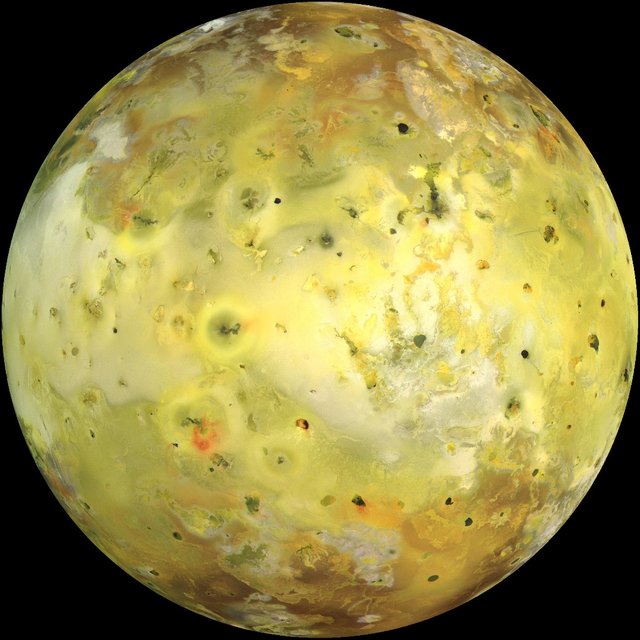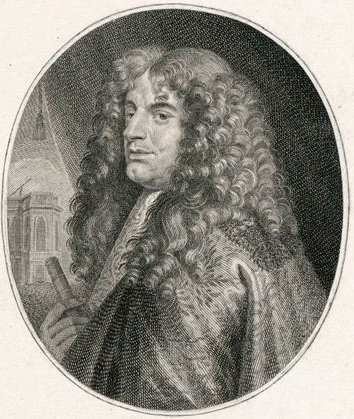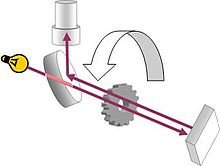Pioneers Of Astronomy: The Speed Of Light
PIONEERS OF ASTRONOMY: THE SPEED OF LIGHT
It was once believed that there was a planet closer to the Sun than Mercury. This suggestion was proposed by Leverrier, who used the exact same argument that had successfully lead to the discovery of Uranus. Mercury has an orbit that does not follow the path predicted by Newton’s laws. Rather than trace the same path each time it orbits the Sun, the planet traces out a complex rosette pattern. This was either because Newton’s laws were in need of modification, or because there was another planet whose gravity was affecting Mercury. Because it lay even closer to the Sun than Mercury, Leverrier called his hypothetical planet Vulcan, after the Roman fire-god. It would be pointless to go into details concerning the hunt for this planet, for the simple reason that it does not exist. Mercury’s strange orbit is actually proof that Newton’s law of gravity is not quite right.
PROOF FROM IO

(Image from Wikipedia)
Although the strange orbit of Mercury did indeed show that Newton’s laws were not the last word in describing the force of gravity, the evidence that this was so was actually stumbled upon by observing Jupiter’s moon, Io. One of Galileo’s strongest arguments in favour of the Copernican model was that this planet and its companion moons resembled a solar system in miniature. Therefore, it is possible to use Newton’s laws to calculate how long Io takes to orbit Jupiter. It does so every four and a half hours. However, this is not a schedule that the moon sticks to with absolute precision. Every now and then, Io will disappear from view because it goes behind Jupiter and is eclipsed by it. And, as is the case with a solar eclipse, we can determine the exact time when Io will reappear on the other side. But for a long time there was known to be a mystery surrounding this distant moon, because sometimes it appeared earlier or later than predicted. Yet again, the Universe was hinting that long-held assumptions needed re-examination.
In 1670, Giovanni Cassini was the world authority on the planet Jupiter and the orbit of its moons. It was he who had the calculations to show that Io did not always orbit the planet with clockwork-like regularity. To Cassini, this error must have lay with Io itself. Perhaps there were clouds obscuring the moon; maybe the gravitational influence of the other moons affected its orbit. Whatever the reason, he felt confident that more precise observations would correct the problem.
This point in the story is a good time to introduce Carl Roemer. His relationship to Cassini mirrored that of Tycho and Kepler in that he was an assistant to Cassini and he solved the riddle of Io’s orbit by overturning an assumption that had lasted for thousands of years. When he achieved this, Cassini was the head of the Paris Observatory. It had been his responsibility to ensure construction went ahead and he had also been charged with breathing life into French science. Cassini was personally motivated to succeed in this endeavour, because although he was in charge of the Paris observatory and had changed his name to Jean-Dominique Cassini, he was actually Italian. Just like Tycho, Cassini depended upon the patronage of the King and was therefore keen to help his adopted country make a name for itself in science.

(Cassini. Image from wikimedia commons)
In 1671, Cassini sent his right-hand man, Jean Picard, to Uraniborg. The reason for this trip to Tycho’s old observatory was to determine exactly where on Earth it was. This information was needed in order to precisely analyse Tycho’s astronomical data. By a nice twist of fate, it was this trip to Uraniborg that lead to Picard meeting Carl Roemer. Roemer was born on the 25th September 1644 and was of Danish origin. He had studied at the university of Copenhagen and had gone on to be an assistant to the physicist and astronomer, Erasmus Bartholin. When Picard arrived in Denmark to carry out his appointed task, Roemer’s assistance was so useful that he was invited to work for the French Academy and to meet Cassini.
At the time when these men met, the Danish Roemer did not hail from a little country, but an empire that stretched across half of Europe. Maybe this was the reason why he had a rather cocksure mannerism and a burning desire to make a name for himself. Cassini feared that this ambitious individual would solve the problem of Io’s orbit before he did and in the summer of 1676 Roemer did just that. As he studied the data on the moon’s orbit, he began to see a link between its sloppy timekeeping and the position of Earth relative to Jupiter. When the Earth’s orbit took it far away from the planet, Io appeared later than scheduled. When we were relatively close to Jupiter, Io appeared earlier. Roemer realised that there was nothing wrong with Io’s orbit. It did travel around Jupiter as regular as clockwork. But when it emerged from behind its parent planet, the light reflected by it took time to cross the distance from there to here. That was why Io appeared ten minutes later than scheduled when the Earth was at its furthest point from it.
There was a slight problem with this hypothesis: Everybody knew it was completely absurd. Light did not have a finite speed, it crossed any distance in an instant. This was not an assumption, but a fact that had been supported by experiments going all the way back to Galileo. The great Italian scientist had also wondered if the speed of light could be measured and had thought up a way to do this. Two men, each with a lantern whose light could be blocked with a shutter, would each stand on a hill miles apart. They would then time how long light took to cross the valley. Galileo never conducted this experiment himself, because when he proposed it he was under house arrest and had gone nearly blind. It was members of the Academy for Experimental Studies that carried out the test, but it proved impossible to measure the speed of light. It seemed to cross the distance in an instant. This seemed to prove the great man’s theory was wrong, but the Florentines refused to accept this. They blamed the failure on the crudeness of the test.
By the summer of 1676, Carl Roemer had used the pattern on how Io’s eclipse times varied and combined that with Cassini and Jean Richer’s calculation for the size of the solar system to determine the speed of light. His figure of 298,000 kilometres per second is remarkably close to the modern value of 299,792 kps. It now became obvious why every experiment conducted on Earth to determine the speed of light had seemingly supported the idea that it was infinitely fast: Anything that travelled at 180 million miles per hour obviously travelled a few miles in no time at all. But, although light was incredibly swift, the gap between Jupiter and Earth was enormously big. Even when they are at their closest, there is a gap of 3.934 AU or 588,518,00 km that light has to cross and even light needs time to close this distance.
Having shown that light travelled at finite speed, Roemer had to decide how best to present his findings to the scientific community. The proper way to go about it would have been to let Cassini present the theory as one of his own, and hope that he made some mention of Roemer’s contribution. But the Dane thought he should get more credit than that. So, instead, he chose to publish a challenge in a journal that was widely read by astronomers. According to Cassini’s calculations, on November 9th 1676, Io would emerge from behind Jupiter at 5:27 pm. Roemer explained that this would not be the case, since light would have to travel the distance from Jupiter to Earth. He predicted that Io would first appear at 5: 37 pm.
On November 9th, telescopes were trained on the giant gas planet as astronomers waited to see which prediction was correct. And it was Roemer’s. Io actually appeared at 5:37 and 49 seconds precisely. He had successfully shown that light travels at finite speed via an impeccable scientific experiment. However, this did not result in the idea of infinitely fast light being abandoned, because Cassini and his followers simply refused to accept the results. Instead, they attributed the moon’s delayed appearance to clouds obscuring the view, or a high orbit making observation difficult. Anything, in fact, rather than admit that age-old assumptions had been wrong all along. It actually took fifty years and the passing of Cassini and his generation before Roemer’s interpretation for Io’s erratic behaviour was accepted. As for the man who first proved that light was not infinitely fast, Roemer went on to become Astronomer Royal and director of the Royal observatory in Copenhagen. He died on 23rd September 1710.
Once it was accepted that light was not infinitely fast, the scientific community set about the task of defining its true speed as accurately as possible. Trying to precisely measure the speed of light may sound like a task fit only for complicated equipment, but actually the apparatus used in measuring its speed was cheerily low-tech. One of the first attempts at measuring its speed was conducted in the 1840s by a French physicist called Armand Fizeau (1819-1896). His method involved the following set up. He placed a mirror on a hilltop off Sureness and Montmarte, and at the other end of an 8 km long path he placed a rotating wheel with a gap in it. A beam of light was sent through the gap in the wheel. It travelled to the mirror and was reflected back the other way to pass through another gap in the wheel. This only worked if the wheel was spun at the right speed, and Fizeau only had to determine how fast it rotated to determine the speed of light. His answer was within 5 per cent of the modern value.

(Image from Wikipedia)
Further refinements came in 1850 to 1862 and were carried out by Leon Foucault. What he did was to bounce light off of a rotating mirror, reflect it off a stationary mirror to bounce off the rotating mirror a second time. The amount by which the beam was deflected showed how much the rotating mirror had moved, and working out the rate at which the mirror rotated gave Foucalt the speed of light. Further refinements of this test brought him within 1 per cent of the modern value.
REFERENCES
Science A History by John Gribbin
E=MC^2 Biography Of An Equation by David Bodanis
This is a very nice history of these astronomers!
You are most kind, thank you.
Great post!